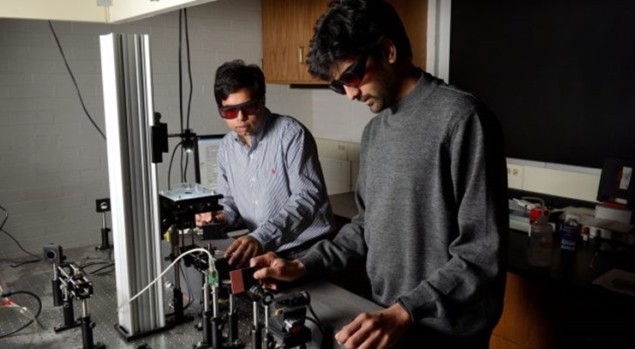
Researchers from Johns Hopkins University and the University of Arkansas have demonstrated that Raman spectroscopy can identify tumours that will be responsive to radiotherapy, paving the way for simple, cost-effective patient stratification (Cancer Research 10.1158/0008-5472.CAN-18-2732).
Santosh Paidi, a graduate research assistant and lead author on this study, has produced the most convincing evidence yet that Raman spectroscopy could be key to reducing patient burden in cases of radiotherapy-resistant tumours.
Raman spectroscopy is a label-free, non-ionizing tool that examines the frequency components of laser light backscattered from an irradiated sample. The spectra contain molecular fingerprints that are sensitive to rotational and vibrational molecular motions in tissue and can therefore detect biophysical changes in the tumour microenvironment.
Unlike previous studies, Paidi’s research compared multiple types of cancer under a clinically relevant dose fractionation scheme. The team showed that Raman spectra could be used not only to measure treatment effectiveness, but also as a possible means of predicting tumour response. “I could foresee a clinical laboratory device employing Raman spectroscopy in the not-too-distant future,” says senior author Ishan Barman.
The animal model
The researchers injected human-derived lung and head-and-neck tumour cells into immunosuppressed mice, using both radiosensitive cells and cells that were rendered resistant to radiation. In this way, they created four groups of mice: with sensitive and with non-responsive tumours, both treated and untreated with radiotherapy. The team excised the tumours at the point in time when most untreated control tumours reached a volume of 1500 mm3.
The researchers collected Raman spectra from the excised tumours using a custom built, portable fibre-optic probe. They identified significant increases in signal from lipid, collagen and glycogen in both lung and head-and-neck tumours after treatment with radiation, and also saw larger signals from radiation-sensitive tumours. This finding demonstrated the consistency of Raman-derived biomarkers in these cancers.
Furthermore, the researchers used the spectra from all tumour groups to train a support vector machine algorithm to differentiate untreated radiosensitive tumours from untreated resistive tumours. They reported a 97% classification success rate for their support vector machine-derived classifier — suggesting that differences in tissue microenvironment prior to radiotherapy may be sufficient to stratify tumours.
Looking to the future
Paidi and colleagues have demonstrated that Raman spectroscopy provides an effective way to monitor radiotherapy efficacy, as well as perhaps identify patients most likely to benefit from such treatment. But how far away are we from clinical tumour stratification?
“The ability to integrate spectroscopic sensing with existing endoscopic platforms has been demonstrated by us and others in other contexts earlier,” says Barman. “The challenge resides in demonstrating the accuracy of these molecular markers in early identification of treatment-resistant head-and-neck squamous cell carcinoma. Systematic accomplishment of these goals is expected to take five years.”
“Our work in this article paves the way for our next set of animal model studies for comprehensive characterization of radiation, as well as chemotherapeutic, responses,” Barman tells Physics World. “Using a non-invasive optical probe, we will then evaluate the feasibility of this method for in vivo tumour monitoring in an effort to harness the predictive power of Raman measurements to personalize chemoradiation therapy in head-and-neck cancer patients.”



